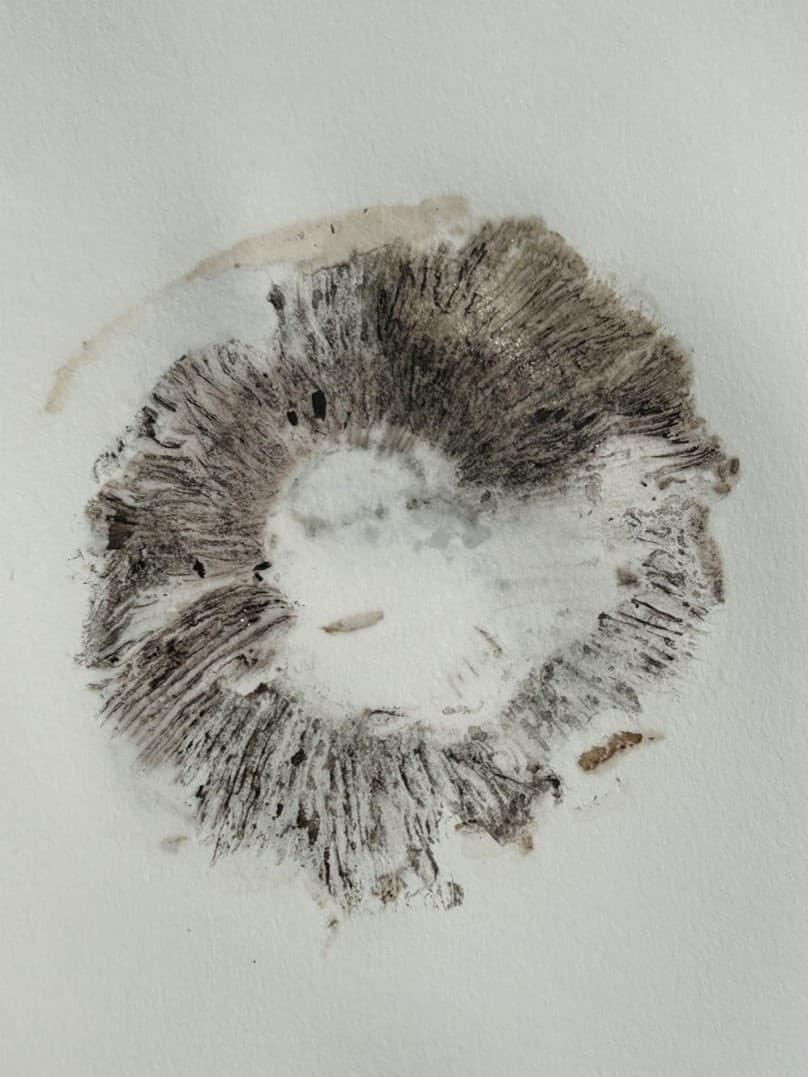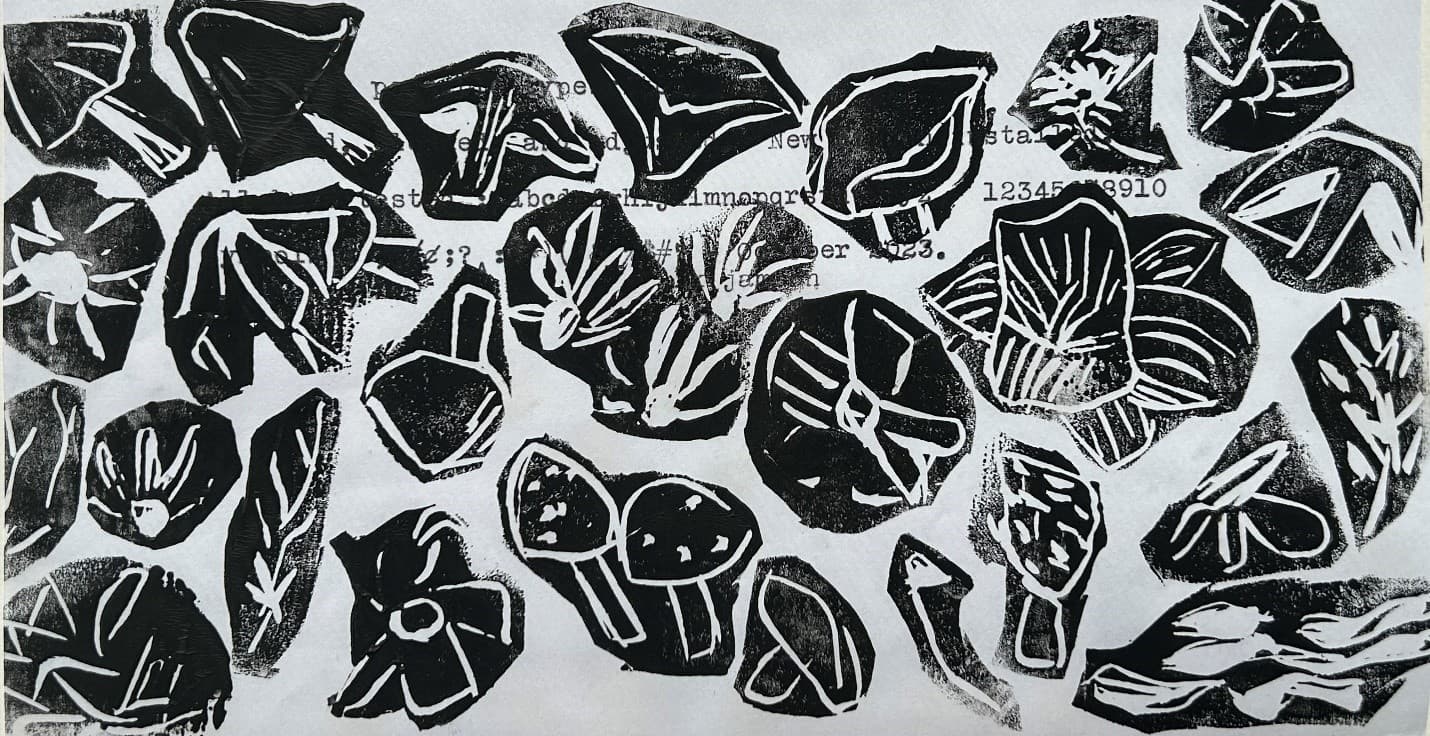Cy Twombly / John Cage
We rely on plants and they rely on fungi, like mushrooms for food. (47) Specimens are crucial to the science of botany. In the Herbarium: The Hidden World of Collecting and Preserving Plants by Maura C. Flannery describes how fungi have been more challenging to collect as specimens because of their moisture content. As an alternative to using the herbarium technique collectors have made spore prints instead. (48) Figure 3 below is a spore print I made from a Portobello Mushroom. The gills that identify this type of mushroom can be seen in the print. This scientific technique is one of the ways that mushrooms have been identified that also be applied to art.

Figure 3, Portobello Mushroom, 2024, Spore Print, By Kasalina Maliamu Nabakooza.
The artist Cy Twombly held unusual but important views on the relation of art and science:
A lot of people have no knowledge of plants, trees, botany and things…I knew a poet who was totally ignorant about botany. And I said: you can’t be a poet without knowing any botany or plants and things like that: it’s impossible, that’s the first thing you should know. (49)
Cy Twombly was an Abstract Expressionist American artist who lived from 1928 – 2011. (50) He worked as a painter, draftsman and sculptor and was especially interested in mark making. (51) Twombly gestural artworks are often multilayered in materials and processes. (52)
Cy Twombly’s Natural History Part I, consists of ten lithographic and mixed-media prints using a collage technique between drawing and photography and contains a mushroom motif. (53). Like Potter, he was inspired by the materials that could be found in Natural History Museums. The song “Women Gathering Mushrooms,” recorded by the American musicologist Louis Sarno in the Central African Republic is described as having polyphony in the book Entangled Life, by Merlin Sheldrake. (54) Sheldrake compares this musical form to the way in which more than one story can be told. (55) The perspective of juxtaposing voices next to each other through collage can be applied to teaching this visual arts unit in a way that empowers students. (56) A friend of Twombly who shared his interest in mushrooms was John Cage an experimental American composer who lived from 1912 to 1992. (57) Cage collected mushrooms during the Great Depression as a food source. (58) He educated himself about the identification of mushrooms because he learned that misidentification could result in poisoning. (59) His interest in mushrooms grew alongside his work as a composer. (60) There is an anecdote about Cage on a game show which demonstrates his extensive knowledge of mushroom types:
In the final episode, with 5m lire at stake (the historical equivalent of about $8,000 or £3,000), he was asked to list the 24 names of the white-spored Agaricus as identified in GF Atkinson’s Studies of American Fungi. He named them all in alphabetical order, prompting sustained applause from the audience. (61)
Cage said: “The more you know them, the less sure you feel about identifying them. Each one is itself.” (62) Cage became interested in the dangers of misidentification and it inspired mushroom art that he made. (63) He also drew inspiration from mushrooms with passion and designed a denim portfolio, with poetry and ten prints. (64) Figure 4 is a botanical inspired linocut print with mushrooms and floral designs. It was inspired by the shifting visual perspectives created by the juxtapositions in the Mushrooms and Flowers exhibition catalogue and how Cy Twombly and John Cage experimented with the mushroom motif. I used a piece of found text on typewriter paper to create a collage effect with the printed images. Color unifies the artwork but the forms when looked at closely have asymmetry in comparison to each other within the composition.

Figure 4, Print Flowers and Mushrooms with Text, 2024, Linocut Print, By Kasalina Maliamu Nabakooza.

Comments: